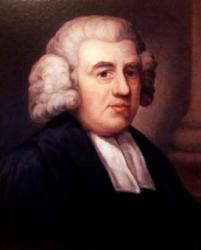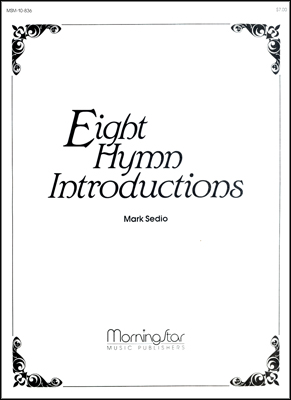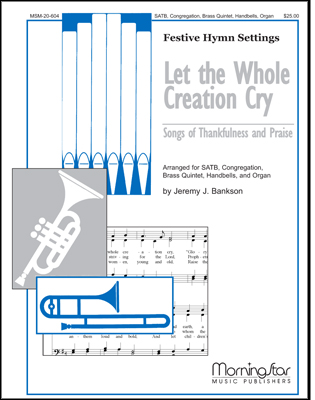- |
User Links
New Year's Day


While, with ceaseless course, the sun
Author: John Newton (1774)Tune: BENEVENTO
Published in 589 hymnals
Printable scores: PDF, MusicXML
Audio files: MIDI
Representative Text
1. While with ceaseless course the sun
Hasted thru' the former year,
Many souls their race have run,
Never more to meet us here:
Fixed in an eternal state,
They have done with all below;
We a little longer wait,
But how little, none can know.
2. As the winged arrow flies
Speedily the mark to find,
As the ligh'tning from the skies
Darts and leaves no trace behind;
Swiftly thus our fleeting days
Bear us down life’s rapid stream;
Upward, Lord, our spirits raise;
All below is but a dream.
3. Thanks for mercies past receive;
Pardon of our sins renew;
Teach us henceforth how to live,
With eternity in view.
Bless thy word to young and old,
Fill us with a Savior's love;
And when life’s short tale is told,
May we dwell with thee above.
Source: Hymns and Devotions for Daily Worship #31
Author: John Newton
 John Newton (b. London, England, 1725; d. London, 1807) was born into a Christian home, but his godly mother died when he was seven, and he joined his father at sea when he was eleven. His licentious and tumultuous sailing life included a flogging for attempted desertion from the Royal Navy and captivity by a slave trader in West Africa. After his escape he himself became the captain of a slave ship. Several factors contributed to Newton's conversion: a near-drowning in 1748, the piety of his friend Mary Catlett, (whom he married in 1750), and his reading of Thomas à Kempis' Imitation of Christ. In 1754 he gave up the slave trade and, in association with William Wilberforce, eventually became an ardent abolitionist. After becoming a tide… Go to person page >
John Newton (b. London, England, 1725; d. London, 1807) was born into a Christian home, but his godly mother died when he was seven, and he joined his father at sea when he was eleven. His licentious and tumultuous sailing life included a flogging for attempted desertion from the Royal Navy and captivity by a slave trader in West Africa. After his escape he himself became the captain of a slave ship. Several factors contributed to Newton's conversion: a near-drowning in 1748, the piety of his friend Mary Catlett, (whom he married in 1750), and his reading of Thomas à Kempis' Imitation of Christ. In 1754 he gave up the slave trade and, in association with William Wilberforce, eventually became an ardent abolitionist. After becoming a tide… Go to person page >Text Information
| First Line: | While, with ceaseless course, the sun |
| Title: | New Year's Day |
| Author: | John Newton (1774) |
| Meter: | 7.7.7.7 D |
| Language: | English |
| Copyright: | Public Domain |
Notes
While with ceaseless course the sun. J. Newton. [New Year.] Published in his Twenty Six Letters on Religious Subjects, &c, by Omicron, 1774, in 3 stanzas of 8 lines, and headed, "For the New Year." It was repeated in R. Conyer's Psalms & Hymns the same year, and again in the Olney Hymns, 1779, Bk. ii., No. 1. It is in extensive use in Great Britain and America. In some collections stanzas ii., iii. are given as, "As the winged arrow flies," but this is not so popular as the full text.… Read More
While with ceaseless course the sun. J. Newton. [New Year.] Published in his Twenty Six Letters on Religious Subjects, &c, by Omicron, 1774, in 3 stanzas of 8 lines, and headed, "For the New Year." It was repeated in R. Conyer's Psalms & Hymns the same year, and again in the Olney Hymns, 1779, Bk. ii., No. 1. It is in extensive use in Great Britain and America. In some collections stanzas ii., iii. are given as, "As the winged arrow flies," but this is not so popular as the full text.
--John Julian, Dictionary of Hymnology (1907)
Read LessAccess an additional article on the Canterbury Dictionary of Hymnology:


 My Starred Hymns
My Starred Hymns





